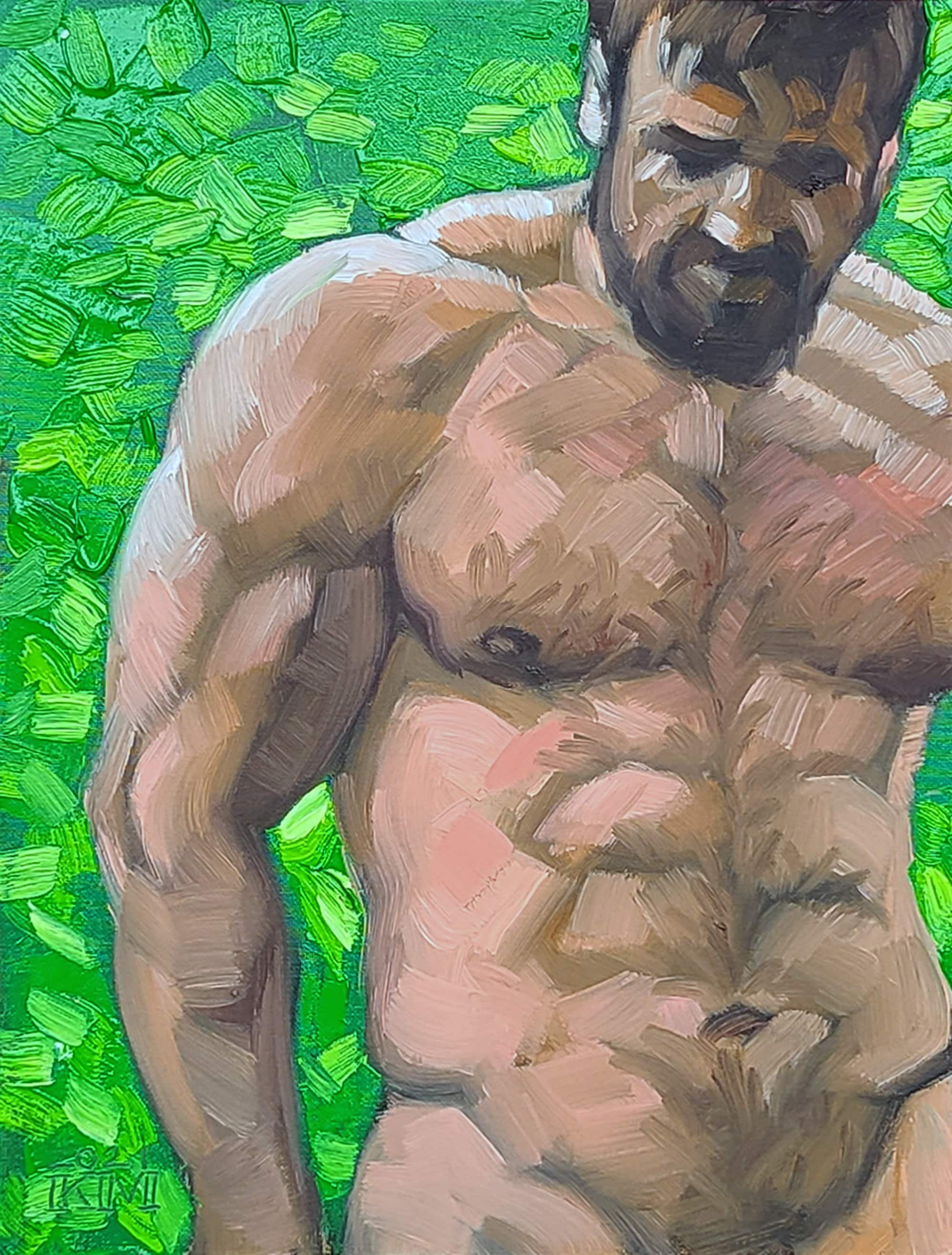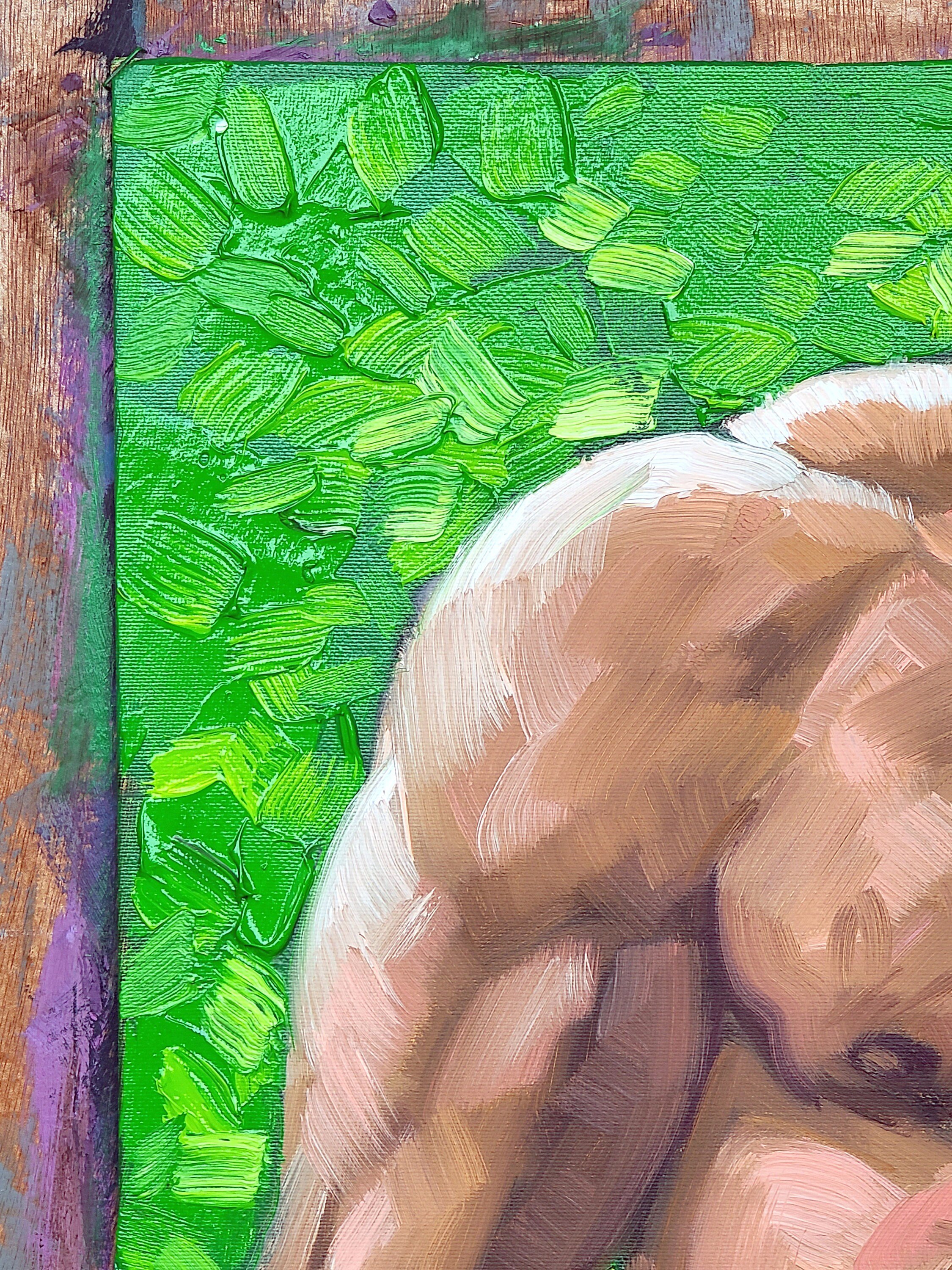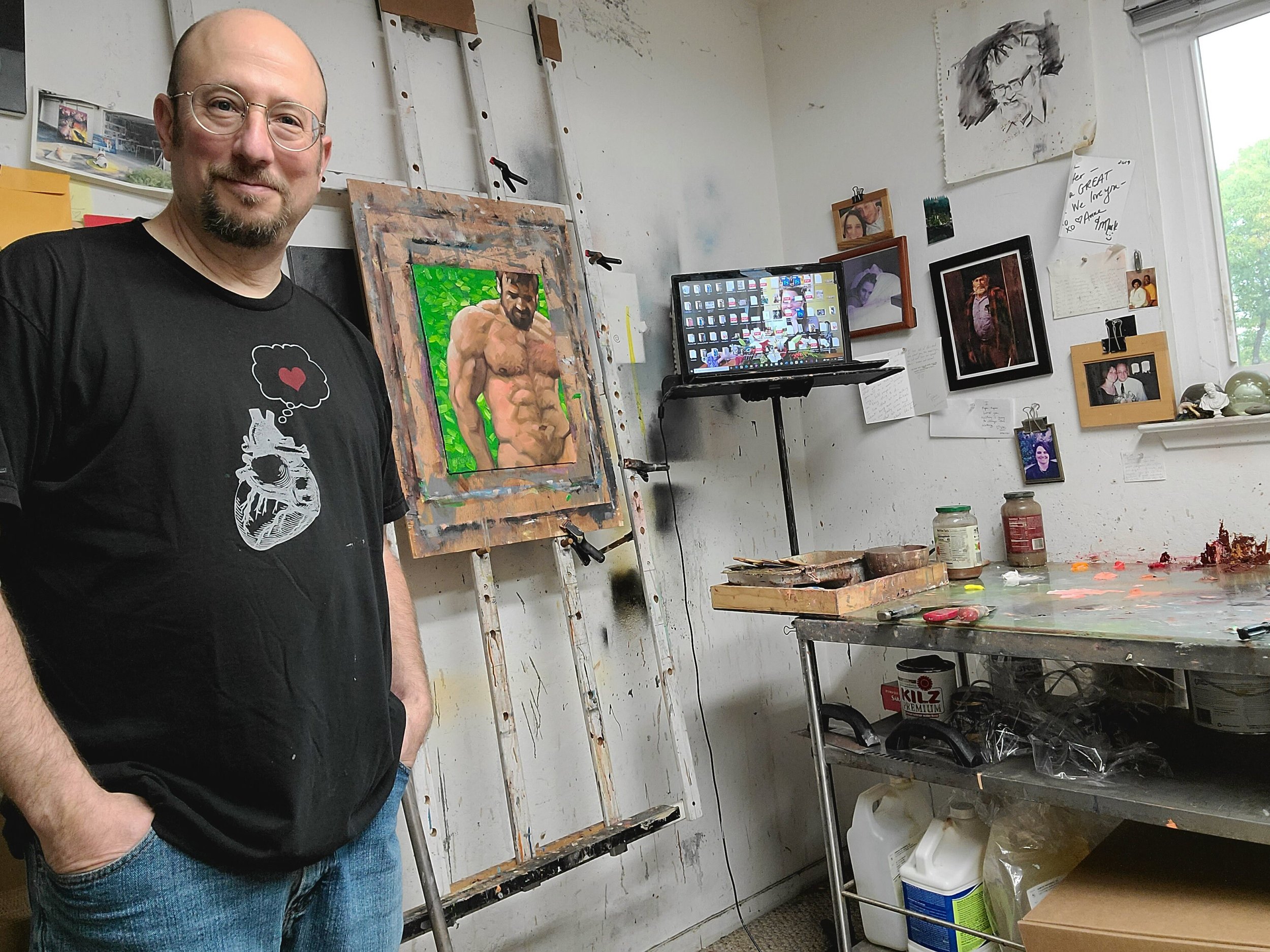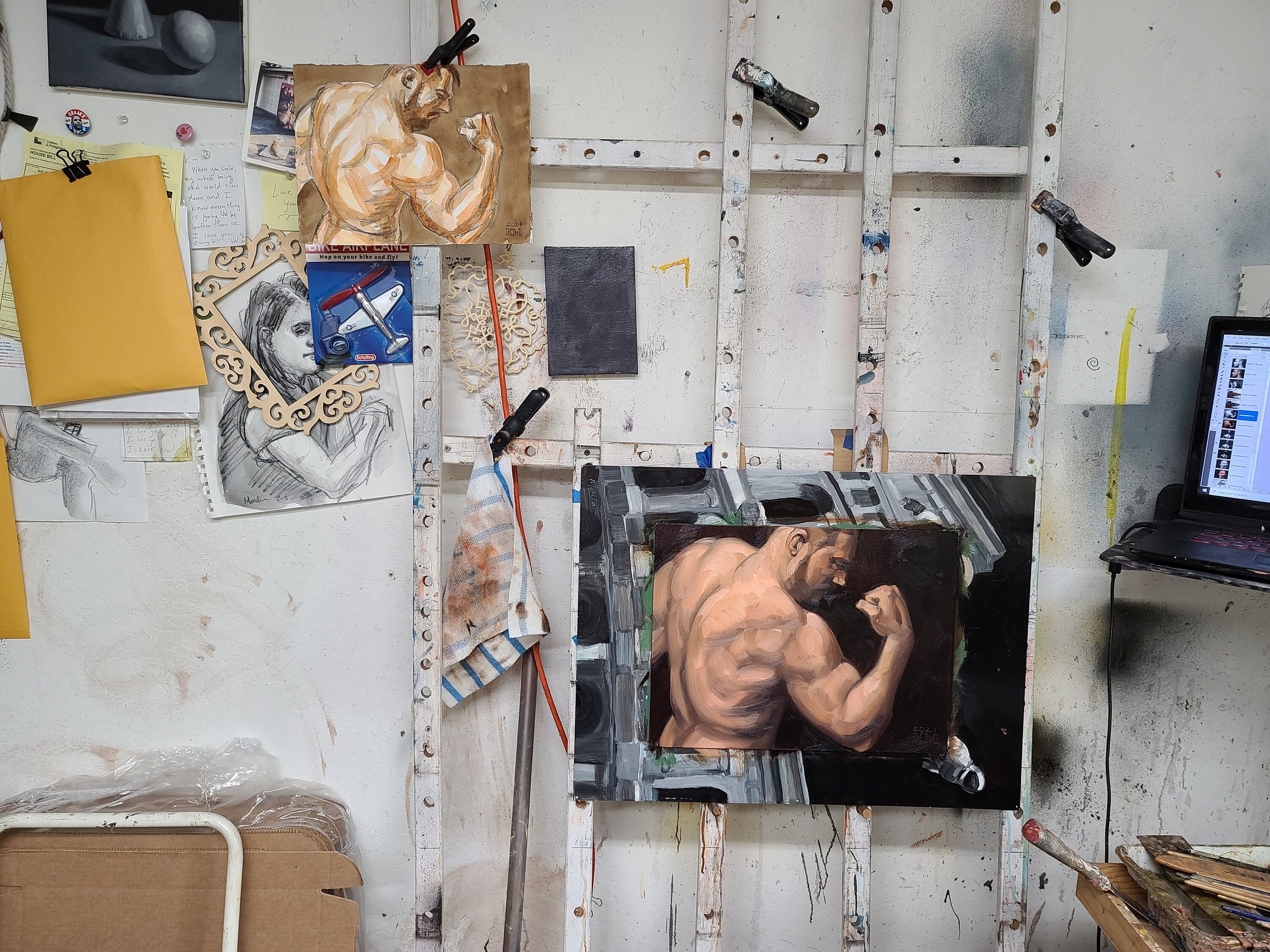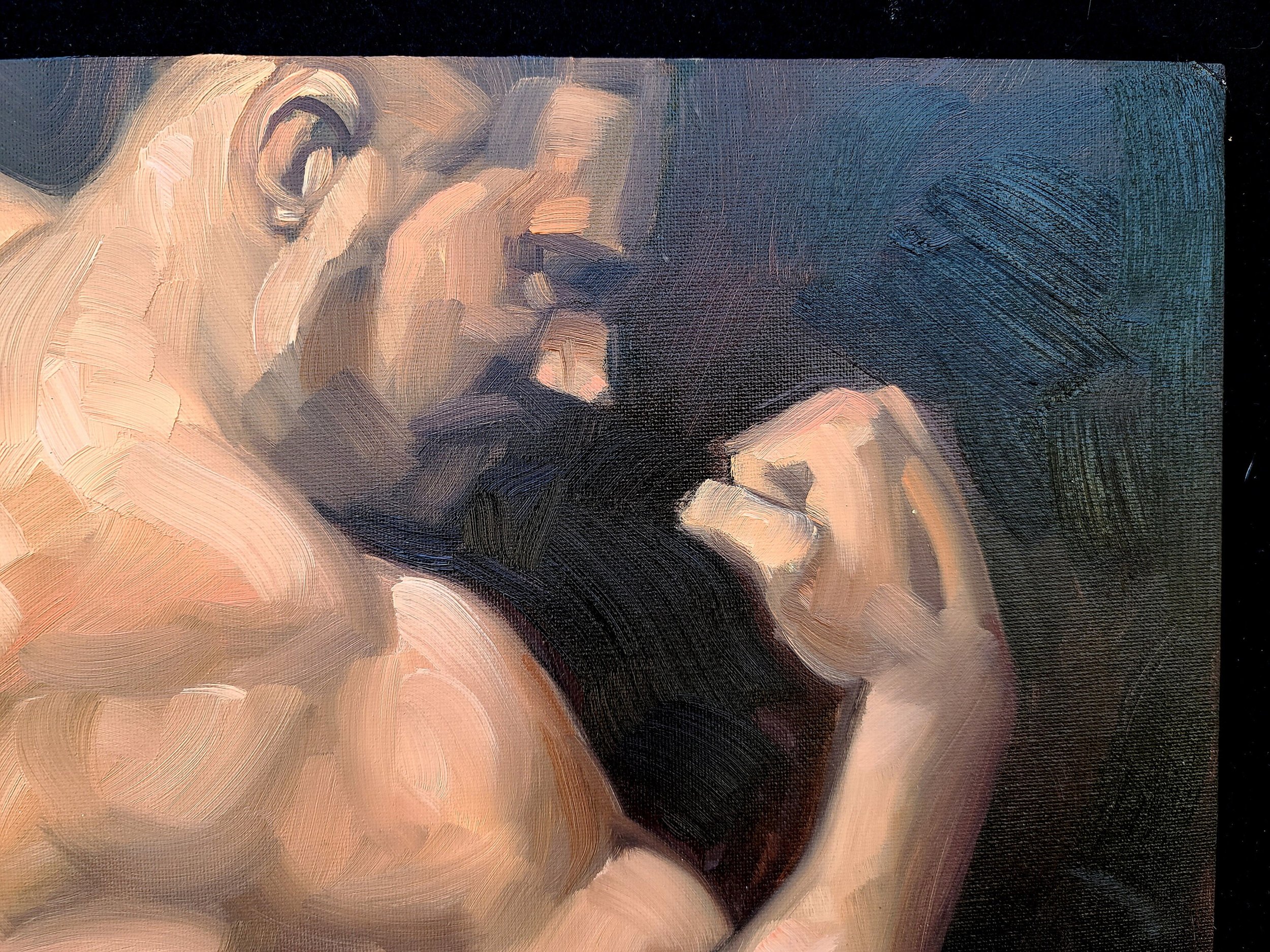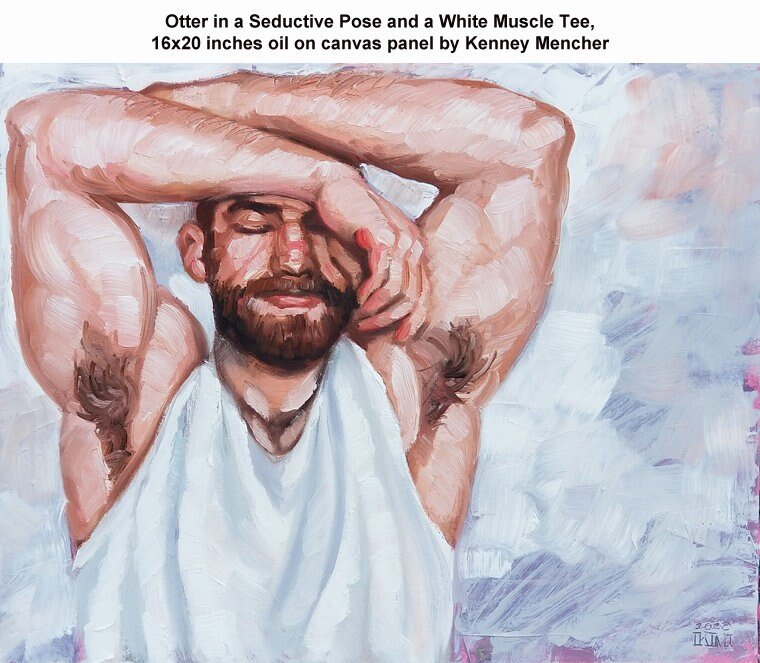 Image 1 of 9
Image 1 of 9

 Image 2 of 9
Image 2 of 9

 Image 3 of 9
Image 3 of 9

 Image 4 of 9
Image 4 of 9

 Image 5 of 9
Image 5 of 9

 Image 6 of 9
Image 6 of 9

 Image 7 of 9
Image 7 of 9

 Image 8 of 9
Image 8 of 9

 Image 9 of 9
Image 9 of 9










Good Trouble, 9x12 inches, crayon on cotton paper by Kenney Mencher A homoerotic drawing of a hairy man's torso. Portrait of a mature man.
FREE SHIPPING Shipping takes 3-4 Weeks This ships from Round Lake Beach, Illinois. A suburb outside of Chicago. I use UPS and sometimes US Post.
For years I had trouble accepting my body as I aged. So I began to paint and draw people who looked more like me and I realized I wasn’t alone when I discovered other bears and the concepts behind “body positivity.”
This painting is based in the tenets of the “body positivity” movement. Body positivity refers to the assertion that all people deserve to have a positive body image, regardless of how society and popular culture view ideal shape, size, and appearance.
Some of the goals of the body positivity movement include:
Challenging how society views the body
Promoting the acceptance of all bodies
Helping people build confidence and acceptance of their own bodies
Addressing unrealistic body standards
In gay culture, a bear is a larger and often hairier man who projects an image of rugged masculinity.
Many straight folks are unaware of the bear subculture. Hardly a surprise, since a powerful majority rarely concerns itself with the doings of a marginalized minority. When, three or four years ago, I first mentioned bears to my straight colleagues in the English Department at Virginia Tech, none of them knew what I was talking about, though by now at least one of them calls me “The Bear.” Similarly, my heterosexual students, as expert as they might be on current media, seem equally ignorant about this topic.
Most GLBT folks, however, by now seem to know the basics. A “bear” is a hairy, bearded, brawny-to-bulky gay man, usually displaying aspects of traditional masculinity. A cub is a younger version of the same; a wolf is a lean, hairy man; an otter a young version of that. “Woof!” is a lustful expression, meaning essentially: “Tasty! I’d like to climb all over that!” “Grrrrr!” means much the same. As you can see, after twenty-some years of development, the bear community, like any subculture, has its own jargon, sometimes called “bearspeak” or “vocabulary.” It also has its own values, its own style, and its own commodities. There are bear-oriented bars, festivals, music, movies, magazines, and books. There are regional clubs for bears not only in metropolitan centers, where the communities first developed, but also in rural areas.
I tried to draw as much as I can. Most of the time I spend my days working on oil paintings in my studio. However, I spend a lot of time in the evenings as I watch TV and listen to music or audiobooks drawing.
I use a light fast black crayon to draw rather than a pencil. Mainly because pencil can smear more easily and the same goes for working with charcoal. I’ve found that working with crayon makes the drawing much more durable and less susceptible to getting smudged or damaged especially during shipping. I also draw on a super heavy cotton fiber paper called Rives BFK. It’s kind of an expensive paper because it’s supposed to be used for printmaking and it’s made out of cotton rather than wood pulp. This makes it feel deliciously thick and sturdy almost like one is trying on the same paper that used to make money.
Drawing is the way that I started painting but it’s also a way that I allow my imagination to run free and experiment with different subjects, techniques, and composition. In this drawing, I was working with the rule of thirds which is a compositional concept in which you try to create an asymmetrical composition by placing the subject or focus of the composition in one of the corners of the page rather than in the center.
I also played with composition by cropping as well as shifting the subject matter to the edges of the page. Often I like to have the figure “kiss” or touch the edges of the picture rather than float free in the center.
FREE SHIPPING Shipping takes 3-4 Weeks This ships from Round Lake Beach, Illinois. A suburb outside of Chicago. I use UPS and sometimes US Post.
For years I had trouble accepting my body as I aged. So I began to paint and draw people who looked more like me and I realized I wasn’t alone when I discovered other bears and the concepts behind “body positivity.”
This painting is based in the tenets of the “body positivity” movement. Body positivity refers to the assertion that all people deserve to have a positive body image, regardless of how society and popular culture view ideal shape, size, and appearance.
Some of the goals of the body positivity movement include:
Challenging how society views the body
Promoting the acceptance of all bodies
Helping people build confidence and acceptance of their own bodies
Addressing unrealistic body standards
In gay culture, a bear is a larger and often hairier man who projects an image of rugged masculinity.
Many straight folks are unaware of the bear subculture. Hardly a surprise, since a powerful majority rarely concerns itself with the doings of a marginalized minority. When, three or four years ago, I first mentioned bears to my straight colleagues in the English Department at Virginia Tech, none of them knew what I was talking about, though by now at least one of them calls me “The Bear.” Similarly, my heterosexual students, as expert as they might be on current media, seem equally ignorant about this topic.
Most GLBT folks, however, by now seem to know the basics. A “bear” is a hairy, bearded, brawny-to-bulky gay man, usually displaying aspects of traditional masculinity. A cub is a younger version of the same; a wolf is a lean, hairy man; an otter a young version of that. “Woof!” is a lustful expression, meaning essentially: “Tasty! I’d like to climb all over that!” “Grrrrr!” means much the same. As you can see, after twenty-some years of development, the bear community, like any subculture, has its own jargon, sometimes called “bearspeak” or “vocabulary.” It also has its own values, its own style, and its own commodities. There are bear-oriented bars, festivals, music, movies, magazines, and books. There are regional clubs for bears not only in metropolitan centers, where the communities first developed, but also in rural areas.
I tried to draw as much as I can. Most of the time I spend my days working on oil paintings in my studio. However, I spend a lot of time in the evenings as I watch TV and listen to music or audiobooks drawing.
I use a light fast black crayon to draw rather than a pencil. Mainly because pencil can smear more easily and the same goes for working with charcoal. I’ve found that working with crayon makes the drawing much more durable and less susceptible to getting smudged or damaged especially during shipping. I also draw on a super heavy cotton fiber paper called Rives BFK. It’s kind of an expensive paper because it’s supposed to be used for printmaking and it’s made out of cotton rather than wood pulp. This makes it feel deliciously thick and sturdy almost like one is trying on the same paper that used to make money.
Drawing is the way that I started painting but it’s also a way that I allow my imagination to run free and experiment with different subjects, techniques, and composition. In this drawing, I was working with the rule of thirds which is a compositional concept in which you try to create an asymmetrical composition by placing the subject or focus of the composition in one of the corners of the page rather than in the center.
I also played with composition by cropping as well as shifting the subject matter to the edges of the page. Often I like to have the figure “kiss” or touch the edges of the picture rather than float free in the center.



